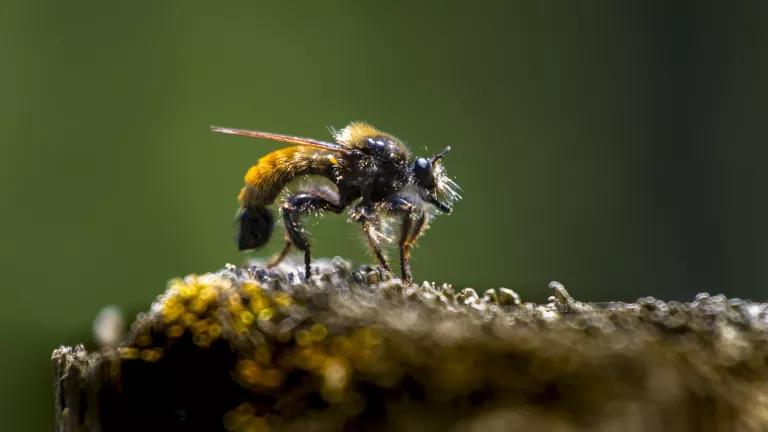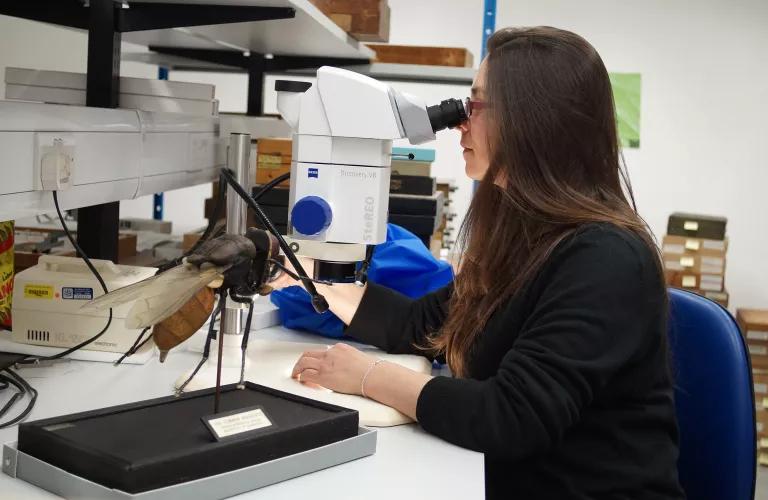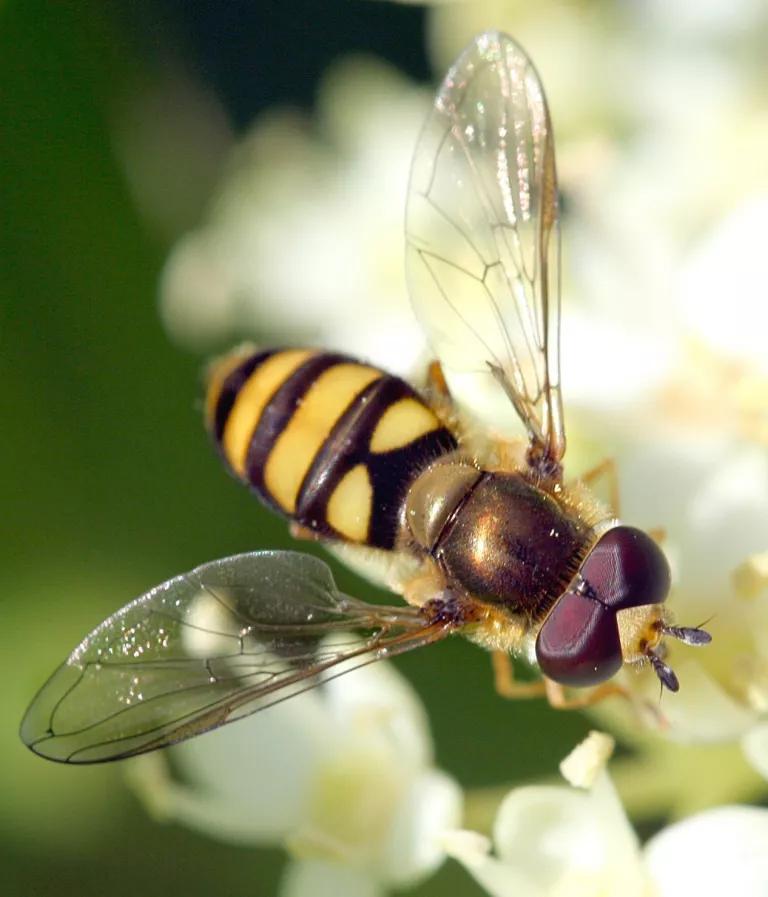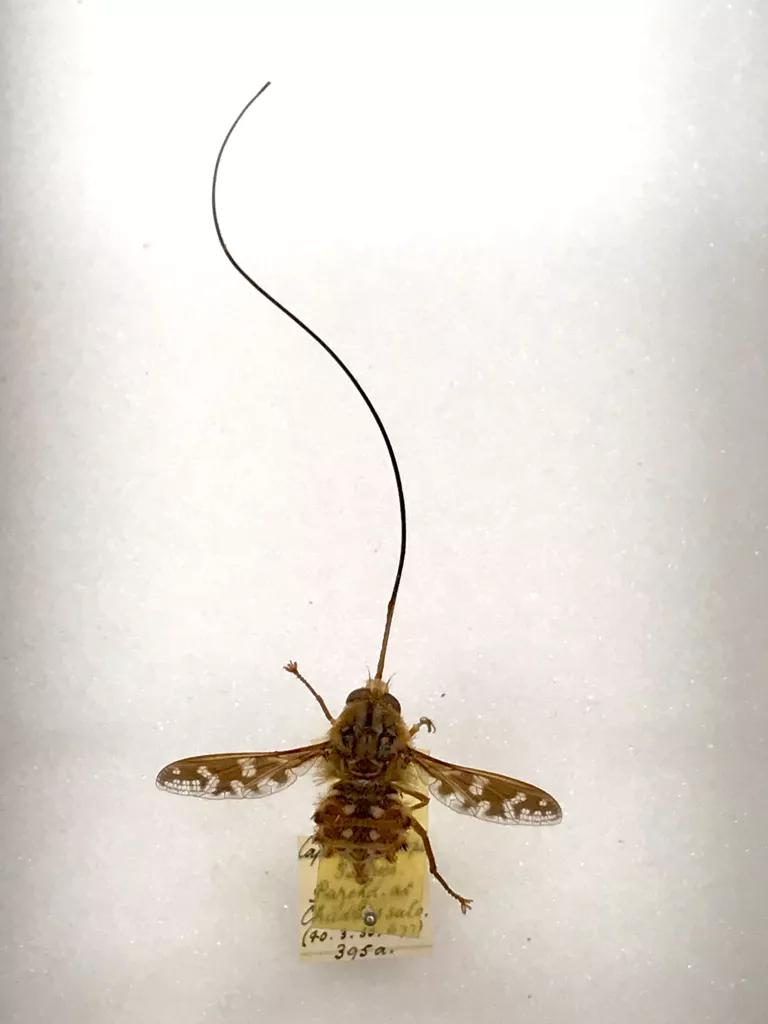There Are Thousands of Reasons to Love Flies. Chocolate Is Just One.
The world’s flies pollinate plants, manage waste, feed the masses, and deserve a little respect (and protection).

Yellow Murder Fly, Laphria Flava
Forget everything you know about flies. Forget about the way they land on your picnic sandwiches and all those times they’ve ruined a nap in a hammock by incessantly landing on your face. Forget, if you can, about maggots, and forget how flies can transmit up to 65 diseases.
Sure, disease is a concern, but lots of animals (including humans) spread it, and we don’t consider that a reason to hate them. Rabbits harbor tularemia, chipmunks get bubonic plague, hedgehogs carry salmonella, and koalas are stricken with chlamydia. So get off your high horse (before it gives you ringworm, leptospirosis, or anthrax).
But the biggest reason to give flies a break is that there are more than 120,000 species of fly in this world, and you’re probably basing your opinion on, like, three of them—houseflies, horseflies, and fruit flies. (Or, for those in the know, mosquitoes, which are nobody’s favorite fly.)
My point is, flies are diverse! There are flies with four-inch wingspans, like the mydas flies of Central and South America, and there are flies like Euryplatea nanaknihali, just over one-hundredth of an inch long—so small, they lay their eggs inside the heads of ants. There are flies with giant feather dusters for legs, flies with hidden rainbows in their wings, and flies that have given up on wings altogether. There are also endangered flies, believe it or not, and extinct ones.
This is why a group of scientists is making 2019 the Year of the Fly. This isn’t a Chinese zodiac thing, so if you have a baby this year, it’s not going to have flylike traits like Jeff Goldblum or anything like that. It just means conservationists are trying really hard to change the way we think about this huge, fascinating branch of the tree of life.

“Flies don’t have a lot of friends,” says Erica McAlister, senior curator of Diptera at the Natural History Museum in London. But they might, if we knew more about them. For instance, did you know that if all flies were to disappear tomorrow, the world’s chocolate supply would vanish too?
Chocolate comes from seeds of the cacao tree. To produce those seeds, the trees rely on the pollination services of more than a dozen species of biting flies called midges. But even with the midges’ help, cacao flowers produce fruit (and the seeds within) only around 30 percent of the time. In fact, cacao trees are so bad at reproducing, says McAlister, they’re like the pandas of the plant world.
Many small cacao farmers clear trees and brush growing around the crop so that they can plant more cacao and increase yields, but the tactic can backfire. The practice destroys the damp, shady areas that midges require as nurseries for their offspring (these are maggots we can get behind). And without midge habitat, pollination rates in cultivated cacao plots have dropped to just 0.3 percent.
Ironically, McAlister says she can’t stand chocolate. “I love flies and most people hate them, and you love chocolate and I hate it, but you kind of need one for the other,” she laughs.

But flies aren’t good only for chocolate. Scientists have discovered 150 families of fly, and of those, 71 are known to sip nectar and transfer pollen. Hover flies of the family Syrphidae, for instance, are such common customers on flowers that they’ve evolved to look exactly like bees, wasps, and hornets. (This mimicry helps them avoid getting picked off by birds, which stay away from bees so they don’t get stung. In fact, with more than 6,000 species of hover fly globally, you’ve likely danced away from one of these yellow-and-black-striped bugs in fear yourself.)
And you can thank a fly for every soft, juicy mango you’ve sunk your teeth into. The chile peppers in your burritos? Pollinated by flies. The black pepper and fennel seasoning your Thanksgiving turkey? Flies. And remember that old Sesame Street skit where there’s a fly in a guy’s soup? Turns out there’d be no chicken noodle soup without that broth-diving insect because flies pollinate carrots and onions, too.

Some plants have even evolved to have flowers that lure flies and flies alone. In her book The Secret Life of Flies, McAlister writes that Moegistorhynchus longirostris has a proboscis, or sucking mouthpart, that can grow three inches long—eight times longer than the fly itself. These flies are able to suck nectar from long-tubed flowers such as irises, orchids, and geraniums, many of which would go extinct without their Gonzo-like life partners.
“Flies can also put up with a ton of crap in terms of temperature,” says McAlister. “So, in the Arctic region, some of the most dominant pollinators are the flies.”
But as hardy and ubiquitous as flies might seem, we have managed to drive a few (that we know of) to extinction. The United States has said goodbye to three of its native flies, says McAlister, thanks to land-use changes and invasive species. An ant in Hawaii, home to many invasive species, was responsible for one of those extinctions.
The Fonseca’s seed fly, which lives on a six-mile strip of the Scottish coast, may also be on the way out. Climate change, erosion, and people trampling over the grassland dunes the insects call home all threaten this endangered insect. (There’s also a rich guy who wants to build a big ol’ golf course on top of the fly’s only known habitat on earth.)
We know almost nothing about this species, and that makes it all the tougher to save, says McAlister. Who knows what resources it needs that development might be disrupting? Who can say what parts of the land are necessary for the insect to complete its life cycle?
Okay, so you still can’t do away with that mental image of a pile of poop or a decaying animal corpse buzzing with flies or throbbing with maggots. Even if so, this too is a good thing. Flies are the first to arrive at the scene and the last to leave, says McAlister. Without them, there’d be mounds of feces and decaying flesh laying around and spreading disease.
So, whether it’s for the sake of chocolate, fresh vegetables, filth control, or simply the intrinsic right of billions of little animals to exist, we should all take a moment to celebrate the Year of the Fly. You don’t have to fall in love with them like McAlister, but as you shoo them away, a nod of acknowledgment for their hard work is also due.
This article was originally published on onEarth, which is no longer in publication. onEarth was founded in 1979 as the Amicus Journal, an independent magazine of thought and opinion on the environment. All opinions expressed are those of the authors and do not necessarily reflect the policies or positions of NRDC. This article is available for online republication by news media outlets or nonprofits under these conditions: The writer(s) must be credited with a byline; you must note prominently that the article was originally published by NRDC.org and link to the original; the article cannot be edited (beyond simple things such grammar); you can’t resell the article in any form or grant republishing rights to other outlets; you can’t republish our material wholesale or automatically—you need to select articles individually; you can’t republish the photos or graphics on our site without specific permission; you should drop us a note to let us know when you’ve used one of our articles.

How to Make an Effective Public Comment
From Dams to DAPL, the Army Corps’ Culture of Disdain for Indigenous Communities Must End
A Trailblazer for Tribal Sovereignty